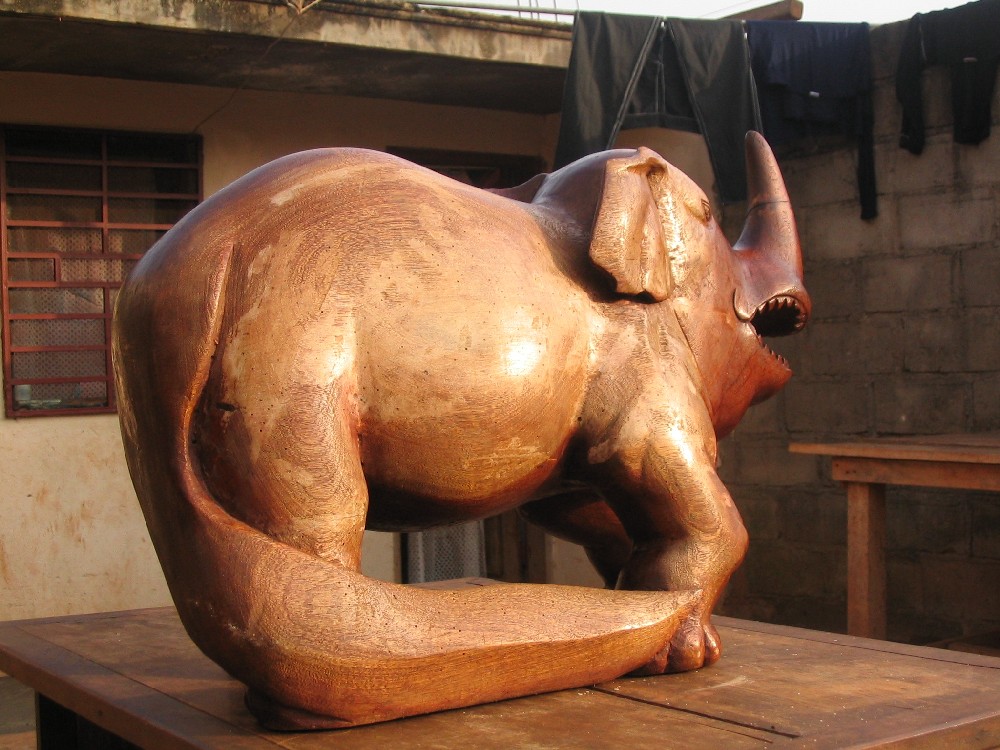The Emela-Ntouka and Mokele-Mbembe have a lot in common. Both are large, four-legged, semi-aquatic herbivores. Both are reputedly aggressive towards other large animals-- Mokele-Mbembe is said to slaughter hippos, and the name "Emela-Ntouka" means "killer of elephants." Both are sometimes depicted with a horn, though this is more common in the case of Emela-Ntouka. And both are considered highly dangerous by locals.
The first reports of Emela-Ntouka came during the "Lost World" craze. During the early 1900s, many cryptids (including this one) were hastily identified with dinosaurs. In some cases, the connection is valid-- Mokele-Mbembe comes to mind. But in most, such theories are far from probable. Take Emela-Ntouka for example. It's generally depicted as a one-horned Triceratops relative, despite much evidence to the contrary. All ceratopsians have frills-- Emela-Ntouka does not. No ceratopsians lived in Africa, where Emela-Ntouka is found. Perhaps most significantly, ceratopsians were too heavy to survive in water-- making one a poor match for this amphibious cryptid.
If not a dinosaur, what is the Emela-Ntouka? Noted cryptozoologist Loren Coleman believes it may be a new species of semiaquatic rhino. This is a much more plausible theory-- rhinos are a better geographic fit for the cryptid, and are certainly capable of swimming. Of course, the Emela-Ntouka does have non-rhino-like features-- the photo above (of a Cameroon sculpture) shows large ears and a lizard-like tail. Whether these differences are fact or artistic license remains to be seen.
Read more about the Emela-Ntouka:

Maybe the "elephant ears" of Emela-Ntouka are based on the frill of triceratops?
ReplyDeleteThat's possible-- after all, Congolese locals would be familiar with elephants, and might see a ceratopsian's frill as a pair of ears. Though honestly, I still think the ceratopsian theory is a tad improbable and that Emela-Ntouka is a rhinoceros, if anything.
ReplyDeleteAlso, Emela-Ntouka is never depicted with more than one horn-- meaning that it wouldn't be a Triceratops, but rather a related species like Centrosaurus or Monoclonius. Note, though, that none of these species are found in Africa.